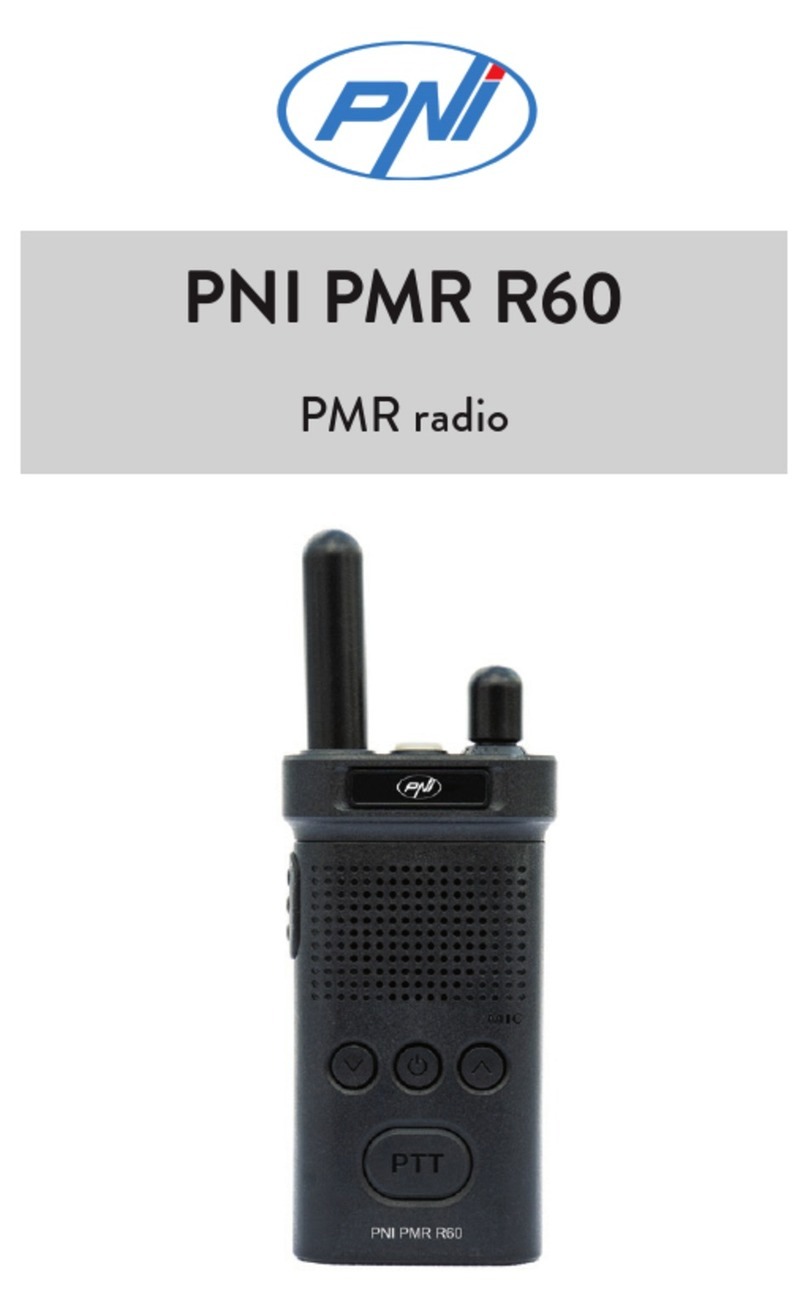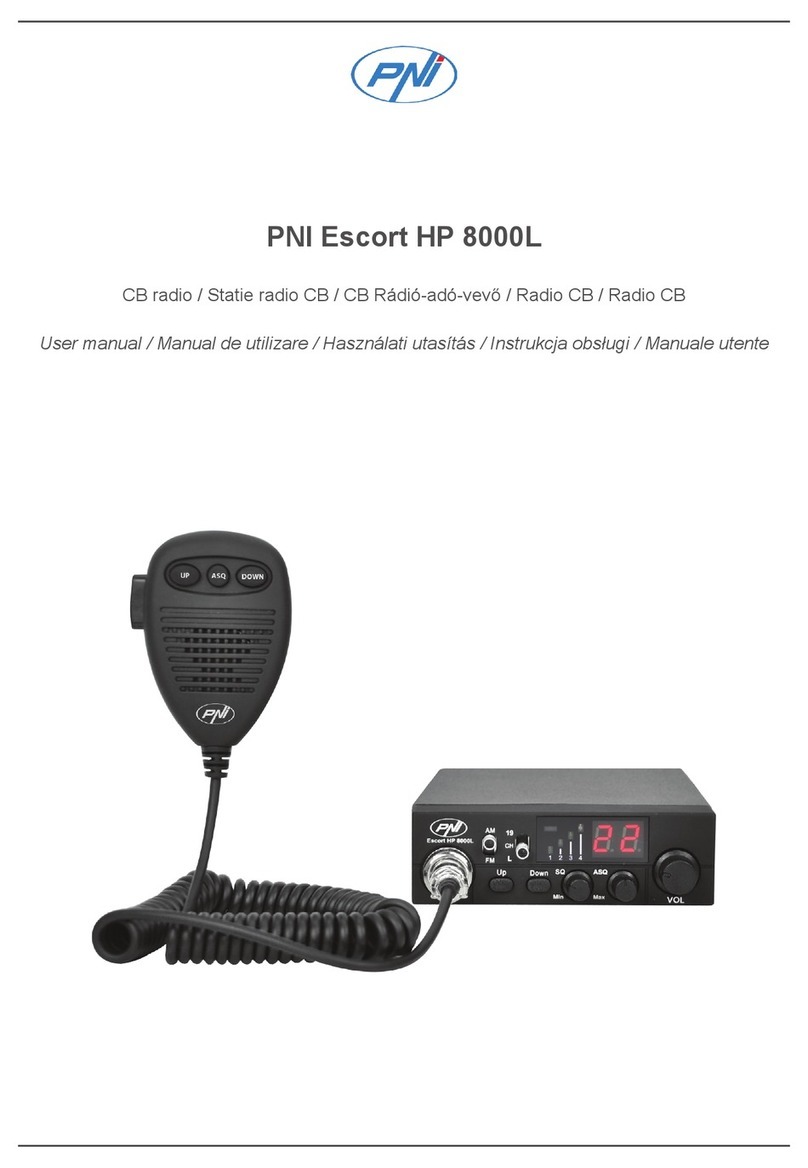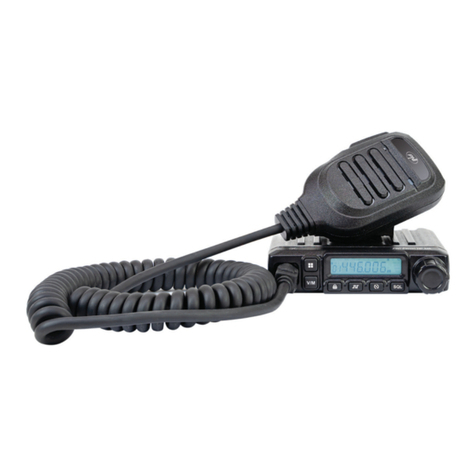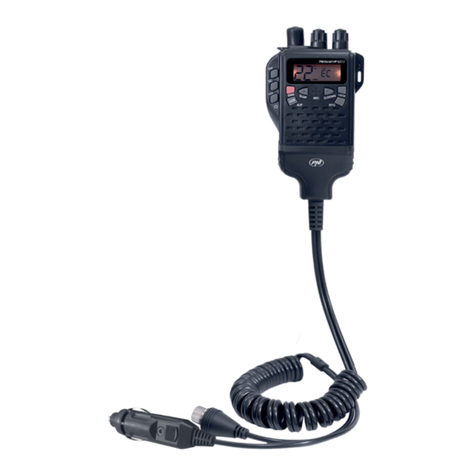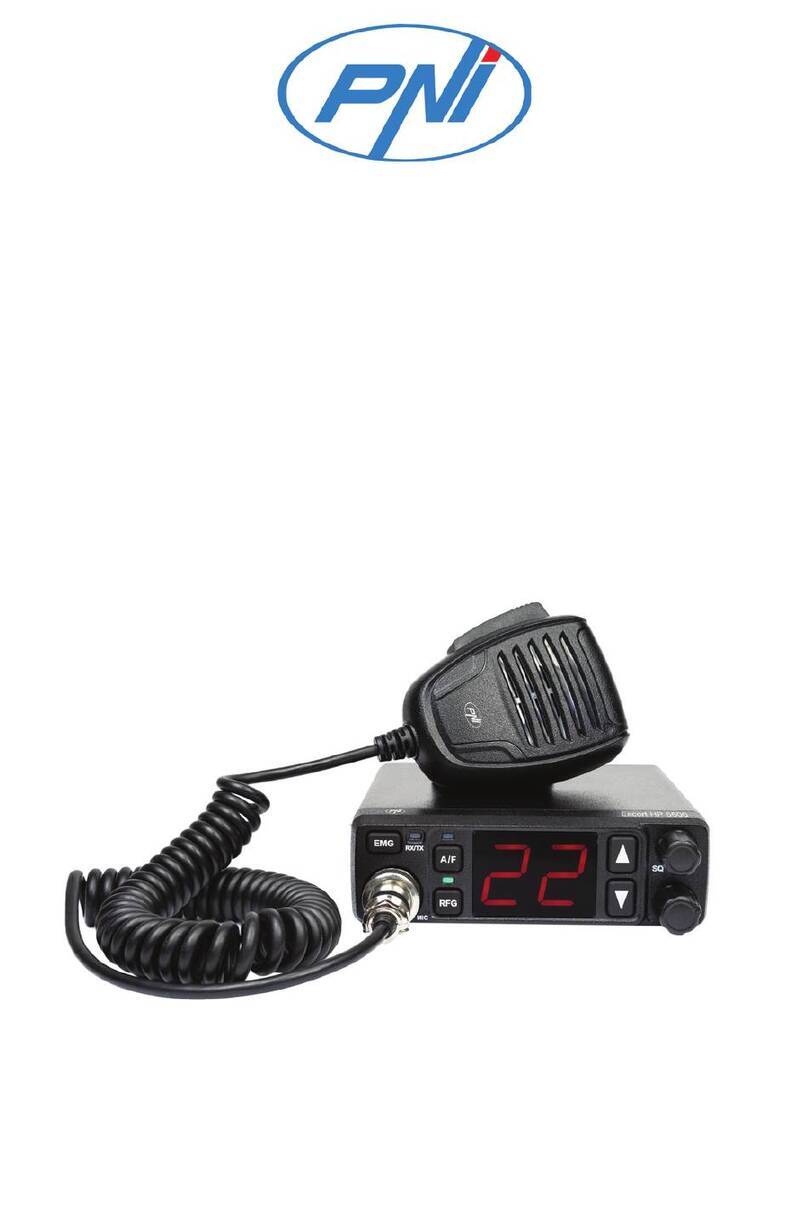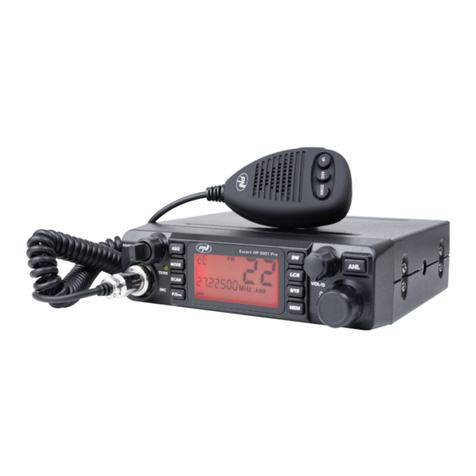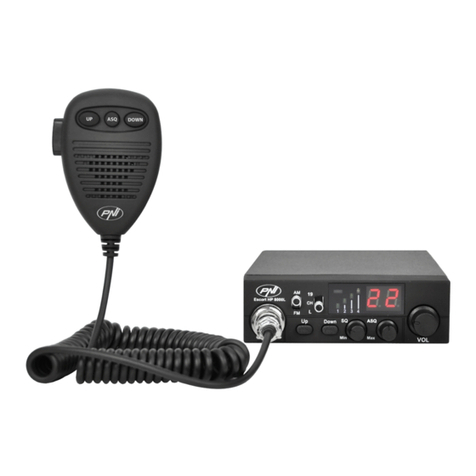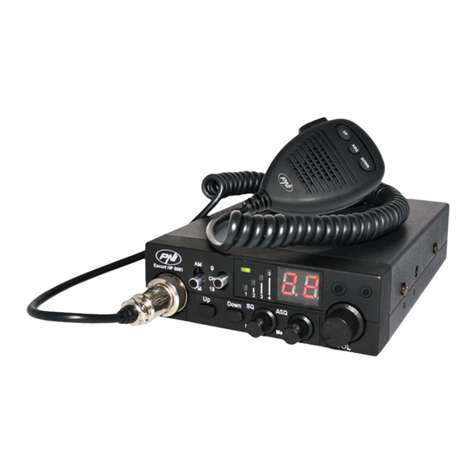
3User manual
English
Special warnings
Read the warnings below to prevent fire, personal injury, or damages to
the CB radio or to the CB antenna.
Do not try to operate the radio while driving. Doing so expose yourself to
the risk of road accidents.
This radio is designed for 12V/24V DC power supply. Do not use a voltage
higher than the recommended one.
Do not place the radio on an excessively dusty, damp or unstable surface.
Do not connect the antenna during transmission; risk of electric shock.
Please keep away from interfering devices (such as: tv, generator, etc.)
Those who use pacemakers are advised to keep their distance from the
antenna during transmission and especially not to touch it.
Do not bring metal objects close to the internal electrical part of the
radio; danger of electric shock.
Avoid exposing the radio to temperatures lower than -26°C and higher
than + 60°C, the temperature on board a vehicle can sometimes exceed
80°C, which can cause irreparable damage to the radio in case of prolonged
exposure. Do not expose the radio to sunlight for a long time.
Do not coverthe redio, it will prevent it from cooling.
Check that the vehicle battery is suciently charged to avoid rapid
discharge.
It is important to turn o the radio before starting the engine to avoid
damage caused by high starting voltage.
When replacing the fuse, you must use a 2A 250V type F fuse. Do not
use a higher value fuse.
If an abnormal odor or smoke is detected coming out of the radio, turn o
the radio immediately.
Do not transmit for a long time, the radio may heat up and malfunction.
Keep the radio away from children.
Other warnings:
Before connecting or using this product, please read the instructions for use
carefully. Keep this manual for future reference.
Before using the radio, connect the antenna. Check the SWR before
transmitting. A too high SWR can lead to the destruction of the radio
